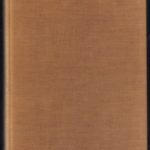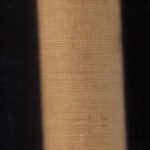Price and stock to confirm
Ed. Routledge & Kegan Paul, 1955. Size 19,5 x 14 cm. State: Used, very good. 202 pages
 CREDO
CREDO
That the resources of imagination and reason are not exhausted
That a mature humanism requires the understanding which can only be given by an elegant theory of nature, of organisms, and of ourselves:
«Now, what are the mathematical entities to which we attribute this character of beauty and elegance, which are capable of developing in us a kind of aesthetic emotion? Those whose elements are harmoniously arranged so that the mind can, without effort, take in the whole without neglecting the details. This harmony is at once a  satisfaction to our aesthetic requirements, and an assistance to the mind which it supports and guides». Henri Poincaré, «Science and Method». The belief in the existence of such elegance in nature is the basis of the Credo
satisfaction to our aesthetic requirements, and an assistance to the mind which it supports and guides». Henri Poincaré, «Science and Method». The belief in the existence of such elegance in nature is the basis of the Credo
That those who are now young may enjoy the experience of watching this understanding develop during their lifetime, if their attention is called to the process now
That this new insight will arise from a clarified idea of FORM, which the sciences will recognize as the most powerful clue to the relatedness of things within reach
 What kind of universe is this into which we are born?
What kind of universe is this into which we are born?
Is it the creation of an intelligible God, whose purpose in putting us here we must try to discover?
Or is the universe an assembly of atoms following laws of chance, and mankind an accident?
Or does the universe display an order in which every part is harmoniously related to the whoile, if we could but see it?
No one knows the answer of these questions. Nor do we know how much it is possible for man to know
The mystery of the existence of the universe may forever lie beyond human comprehension. We are part of a cosmic process which cannot be compared with anything else, since it is unique
Yet it may be useful to pose absolute questions and to consider what kind of answers might be given to them
CONTENTS
Credo
I-The search for Understanding
II- What is Form?
III- The world of Form and Structure
IV- Athoms, Wholes, or a New Look?
V- The Face of the Moon
VI- Invisible Structure
VII- What is Life?
VIII- What is Man?
IX- His Plastic Brain
X- His Creative Activities
XI- His Present Wrongheadedness
XII- The Magic of Form
Further Reading
